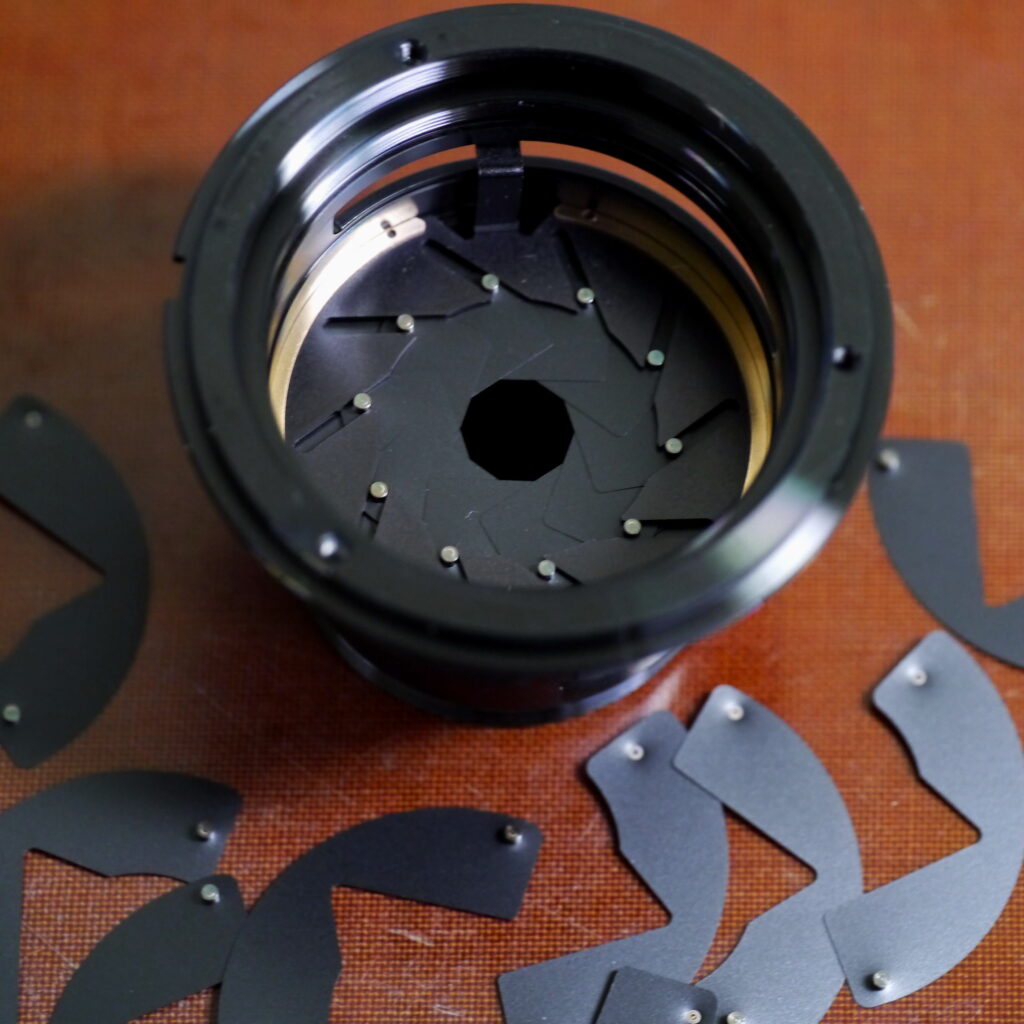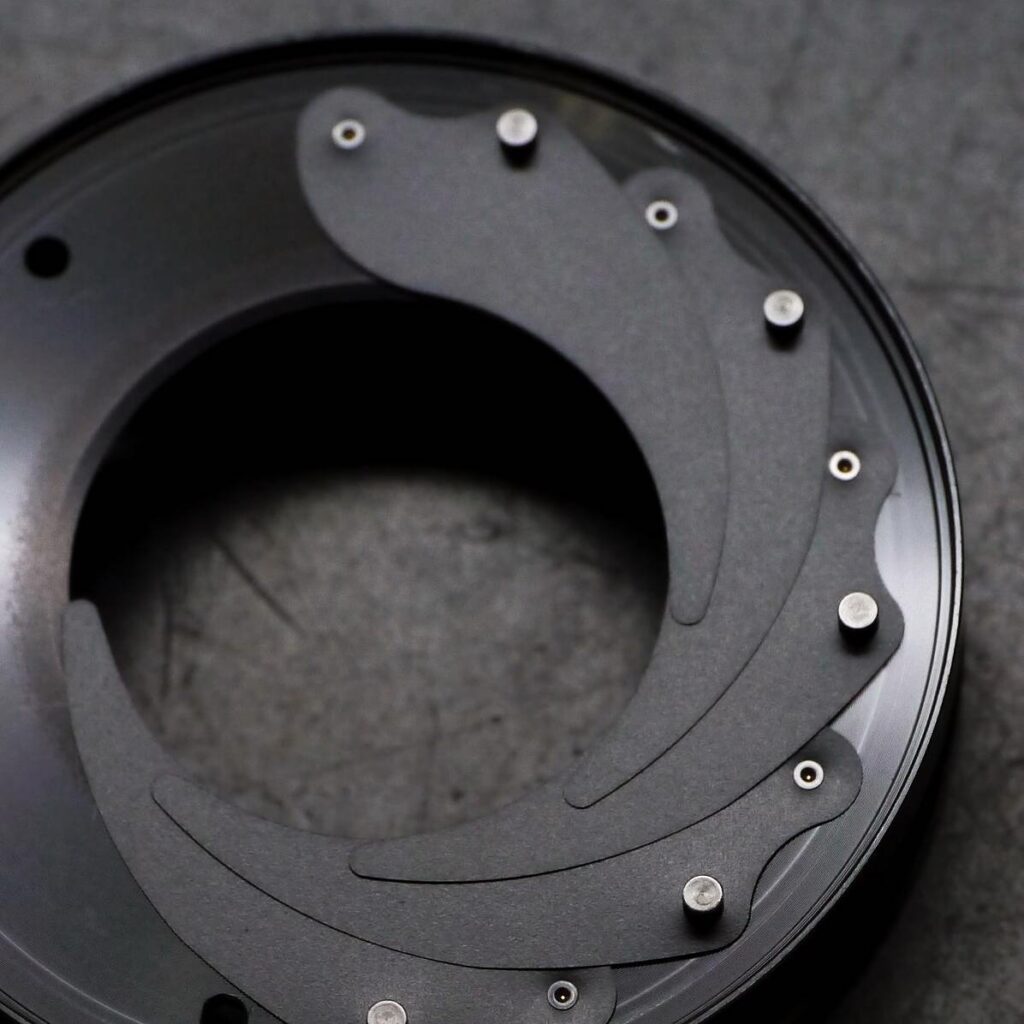Diaphragm blade design and assembly

The two most important aspects to operating a camera are shutter speed and aperture. The shutter-speed determines how long the light coming in through the lens can contact the film or imaging element, while the diaphragm changes the size of the aperture where light enters the lens. The diaphragm opens and closes pupil-like “iris” to the required amount of light. The size of the iris is changed when the aperture ring is operated because the thin metal blades shown in the above photograph are assembled into a ring and set inside the lens so that each blade moves in sync with the others.

Rangefinder lenses and other lenses that are manually operated use boomerang-shaped diaphragm blades, while SLR lenses and other lenses that automatically stop down the aperture use sickle blade-shaped diaphragm blades. Besides ensuring that the amount of incoming light is halved with each aperture step, we are particularly carefully when designing diaphragm blades that they form a beautiful iris. The defocussing effect (bokeh) of a lens is greatly affected by the number and shape of the diaphragm blades, in addition to the lens’ descriptive characteristics. The more blades there are, the more circular the iris is and the softer the bokeh.
How to make a round iris by numbers of diaphragm blades? One of the most particular points for us when designing lenses.

If fact, because of our obsession with design, we actually make manufacturing a little more labor-intensive. That’s because, whether a diaphragm has 5 or 6 blades, assembly efficiency increases markedly. It takes a great deal of concentration to assemble the diaphragm blades into a ring inside a lens barrel by holding of an incredibly thin blade with tweezers. Especially when tucking the last blade underneath the adjacent blades, any twitching in the fingertips could scatter all of the blades. The reason why we rely on this kind of dexterous manual work, even if this cost us more time and labor, is purely so that users can enjoy the quality of beautiful bokeh befitting of a high-end optical product.